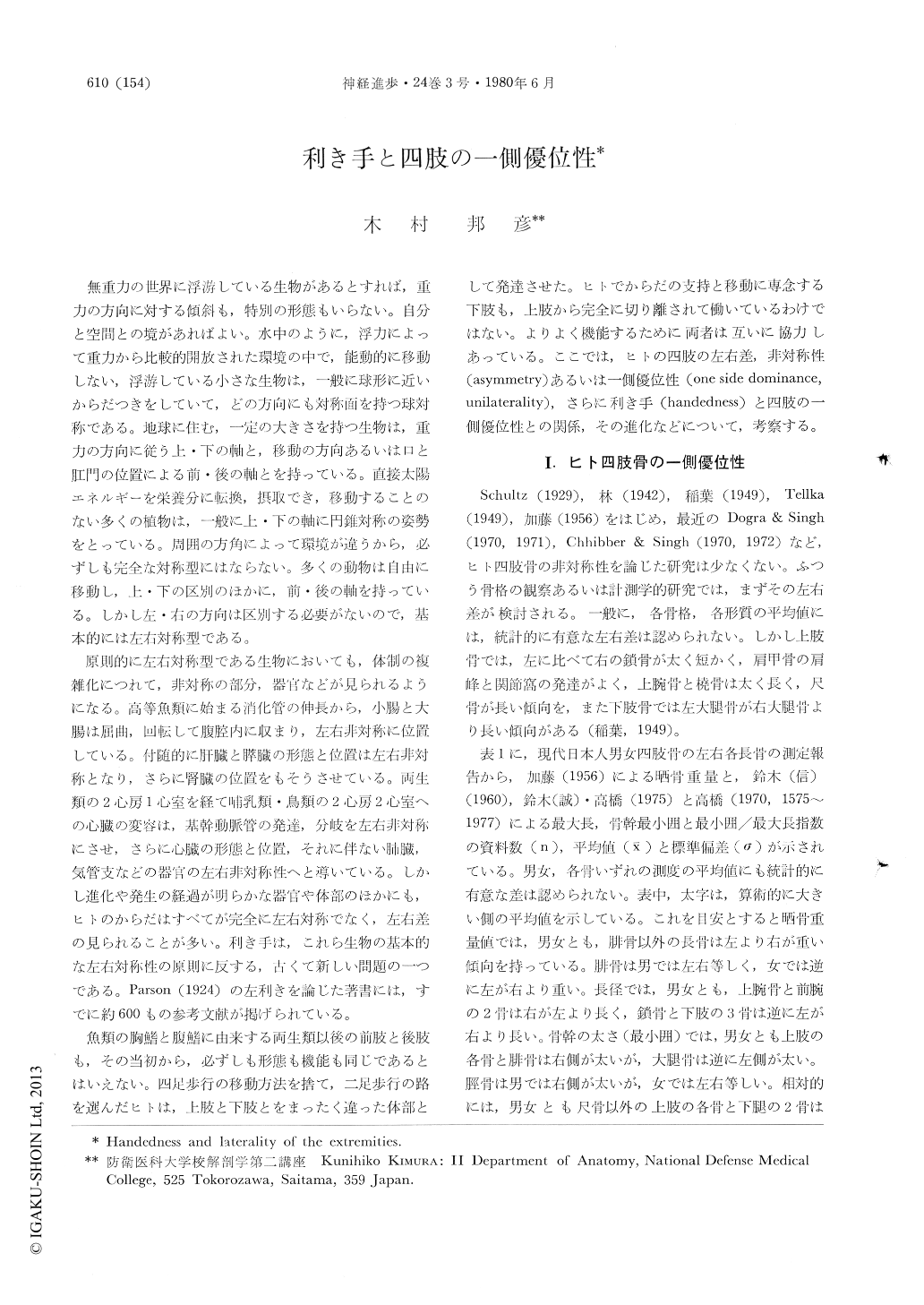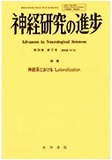Japanese
English
- 有料閲覧
- Abstract 文献概要
- 1ページ目 Look Inside
無重力の世界に浮游している生物があるとすれば,重力の方向に対する傾斜も,特別の形態もいらない。自分と空間との境があればよい。水中のように,浮力によって重力から比較的開放された環境の中で,能動的に移動しない,浮游している小さな生物は,一般に球形に近いからだつきをしていて,どの方向にも対称面を持つ球対称である。地球に住む,一定の大きさを持つ生物は,重力の方向に従う上・下の軸と,移動の方向あるいは口と肛門の位置による前・後の軸とを持っている。直接太陽エネルギーを栄養分に転換,摂取でき,移動することのない多くの植物は,一般に上・下の軸に円錐対称の姿勢をとっている。周囲の方角によって環境が違うから,必ずしも完全な対称型にはならない。多くの動物は自由に移動し,上・下の区別のほかに,前・後の軸を持っている。しかし左・右の方向は区別する必要がないので,基本的には左右対称型である。
原則的に左右対称型である生物においても,体制の複雑化につれて,非対称の部分,器官などが見られるようになる。高等魚類に始まる消化管の伸長から,小腸と大腸は屈曲,回転して腹腔内に収まり,左右非対称に位置している。付随的に肝臓と膵臓の形態と位置は左右非対称となり,さらに腎臓の位置をもそうさせている。
Abstract
On the morph of human extremities, there are generally little bilateral differences, but significant differences between dominant and non-dominant sides. Two types of laterality are identified for morphological characteristics of the upper limb, based on whether it is related or not to the handedness. In the former type of laterality, the garths of upper arm and forearm, the hand width, etc. are ipsilateral, and the hand length and subcutaneous fat thickness are contralateral, to the handedness. In general, functional measurements are obviously ipsilateral to the handedness.

Copyright © 1980, Igaku-Shoin Ltd. All rights reserved.


